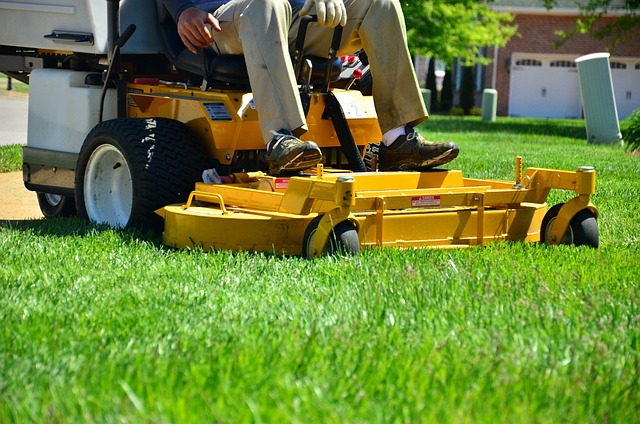Effective Lawn Care and Landscaping requires understanding your lawn's unique water needs, determined by grass type, shading, and soil conditions. Professionals suggest evaluating water requirements during dry periods and choosing the right irrigation system – sprinkler for broad coverage, drip for efficiency in scarce regions, or micro-sprinkler for targeted application. Key to success is proper placement, design, and maintenance of the system, ensuring uniform water distribution, minimizing moisture loss, and scheduling installations optimally. Regular upkeep, including leak checks and filter cleaning, guarantees optimal Lawn Care and Landscaping results.
“Elevate your lawn care game with a strategic irrigation system installation—the key to a lush, vibrant landscape. This comprehensive guide navigates the essential aspects of efficient watering, addressing varying grass types and their water requirements. From traditional sprinklers to innovative drip systems, we explore the pros and cons of each. Additionally, discover expert tips for a successful installation, ensuring optimal results in lawn care and landscaping.”
- Understanding Your Lawn's Water Needs: A Foundation for Effective Irrigation
- Choosing the Right Irrigation System: Sprinklers, Drip, and Beyond
- Installation Tips and Best Practices for Optimal Lawn Care and Landscaping
Understanding Your Lawn's Water Needs: A Foundation for Effective Irrigation

Irrigating your lawn effectively starts with understanding its specific water requirements. Lawns are diverse, with varying needs based on grass types, shading, and soil conditions. Different grasses thrive under distinct moisture levels, so identifying your lawn’s unique characteristics is crucial for optimal care. Regularly examining your turf’s health and adjusting irrigation accordingly ensures neither over- nor underwatering, both of which can damage the lawn and lead to costly landscaping repairs.
Lawn care and landscaping professionals often recommend evaluating your lawn’s water needs during dry periods. This involves observing the grass’ reaction to reduced watering, checking soil moisture levels at various depths, and monitoring for signs of drought stress. Armed with this knowledge, you can tailor your irrigation system to provide precisely what your lawn requires, fostering a lush, vibrant outdoor space that thrives under your care.
Choosing the Right Irrigation System: Sprinklers, Drip, and Beyond

When it comes to choosing an irrigation system for your lawn care and landscaping needs, there are several options available that cater to different preferences and property types. The most common types include sprinkler systems, drip irrigation, and micro-sprinklers. Each has its unique advantages.
Sprinkler systems, popular for their efficiency, involve a network of pipes buried underground with sprinklers strategically placed to deliver water directly to the plant roots. This method is ideal for large areas as it covers a broad expanse evenly. Drip irrigation, on the other hand, offers precision by releasing small amounts of water close to plants’ roots, minimizing evaporation and waste. It’s an eco-friendly choice that works well in regions with water scarcity. Micro-sprinklers are a newer technology, combining elements from both sprinkler systems and drip irrigation, providing a more targeted approach while still maintaining the coverage benefits of sprinklers. They’re suitable for both residential and commercial lawn care and landscaping projects.
Installation Tips and Best Practices for Optimal Lawn Care and Landscaping

When installing an irrigation system, proper placement and design are key for effective lawn care and landscaping. Consider your lawn’s specific needs—shady areas, varying soil types, and slope—to ensure water distribution is uniform. A well-planned layout will prevent water wastage and encourage lush, healthy grass growth. Use drip lines or micro-sprinklers for areas with dense foliage to minimize moisture loss and target specific plants.
Best practices involve scheduling installations during the coolest part of the day to reduce evaporation. Ensure sufficient clearance between sprinkler heads and vegetation to prevent damage from over-saturation. Regular maintenance is also vital. Check for leaks, clean filters, and adjust spray patterns as your lawn grows or changes. By following these tips, you’ll achieve optimal lawn care and landscaping results with your irrigation system.
Irrigation system installation is a strategic investment in your lawn care and landscaping. By understanding your lawn’s water needs, selecting the right system (sprinklers, drip, or otherwise), and adhering to best practices during installation, you lay the foundation for a lush, healthy, and sustainable yard. These steps ensure efficient water use, optimal plant growth, and long-term cost savings, making your irrigation system a valuable asset for any homeowner dedicated to meticulous lawn care and landscaping.
